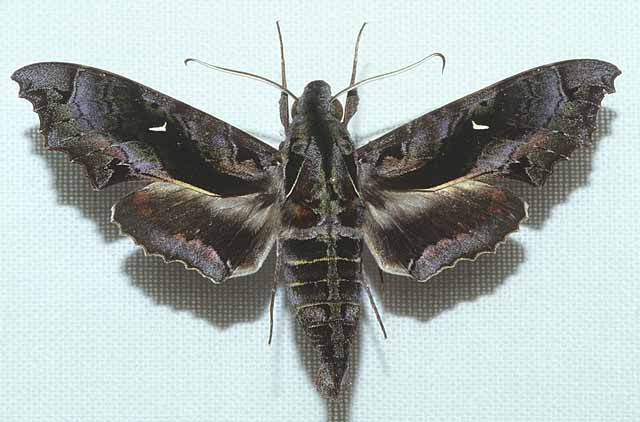In Hemeroplanes diffusa the yellow bands of the abdomen upperside extend across the entire width of the segments.
The fringes of the tergites are also yellow.
The underside of the body is a paler orange than in Hemeroplanes triptolemus.
The forewing upperside has bluish-white shading in the basal and postmedian areas, and the silver mark is 4-5 mm long, not forked basally.
The posterior branch is obsolete.
The hindwing upperside has bluish white shading in the marginal area, and the basal area is also bluish-white.
The hindwing underside is more orange than in Hemeroplanes triptolemus, and the postmedian area is rust-brown along the greyish-brown border. CATE
Of the four Hemeroplanes species, H. diffusa is the only one that does not have the silver streak basally forked;
Hemeroplanes longistriga is the only one with elongated extensions of the silver streak; Hemeroplanes ornatus
has upper yellow abodminal bands that are retricted (but clearly visible) and do not cross the entire abdomen, while those same upper yellow bands extend dorsally across
entire segments in triptolemus.

